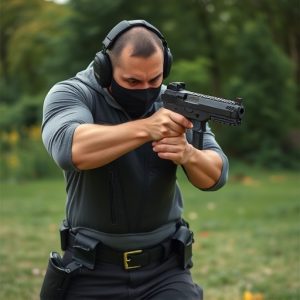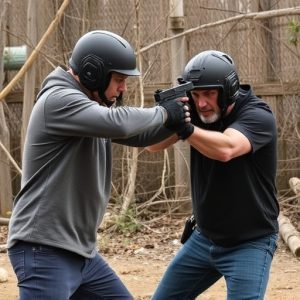Stun Guns: Duration of Muscle Incapacitation & Retail Considerations
Bulk stun guns designed for retail stores temporarily incapacitate attackers by disrupting muscle el…….
Bulk stun guns designed for retail stores temporarily incapacitate attackers by disrupting muscle electrical signals, with effects lasting 2-5 minutes. Power output, voltage, and target area influence this duration. Selecting such guns requires consideration of power (in joules), technology, brand reputation, durability, and ease of use. While effective for self-defense, their use carries debates and potential health risks, necessitating adherence to local regulations and responsible practices.
“Uncovering the impact of stun guns on muscle incapacitation is crucial for both law enforcement and self-defense enthusiasts. This article delves into the science behind muscle disruption, exploring how stun guns affect the body’s electrical system. We examine various factors influencing the duration of muscle weakness, with a focus on bulk stun guns available for retail stores.
From safety measures to legal considerations, this comprehensive guide offers insights for responsible ownership while highlighting the importance of understanding the tactical advantages and potential risks associated with these devices.”
- Understanding Muscle Incapacitation: A Brief Overview
- Stun Guns and Their Effect on Muscles
- Factors Influencing Duration of Muscle Weakness
- Bulk Stun Guns for Retail Stores: What to Consider
- Safety Measures and Legal Implications
Understanding Muscle Incapacitation: A Brief Overview
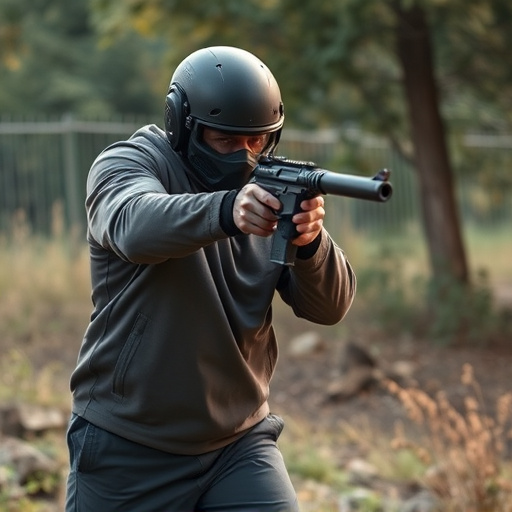
Muscle incapacitation refers to the temporary loss of muscular control, which can be induced by various factors, including stun gun discharges. When a stun gun delivers an electric current, it disrupts the nerve signals that control muscle movement, leading to a brief but intense reaction. This effect is often referred to as a ‘stun’ and can leave the target immobilized for several minutes. The duration of muscle incapacitation varies depending on factors like the power output of the stun gun, the area targeted, and individual tolerance levels.
For those considering purchasing bulk stun guns for retail stores, understanding this concept is crucial. High-quality stun guns designed for self-defense are built to deliver a powerful yet safe shock, ensuring the target is incapacitated without causing permanent harm. The incapacitation period can range from 3 to 5 minutes, giving users enough time to escape or defuse potentially dangerous situations. This knowledge empowers individuals and retail businesses alike, enabling them to make informed decisions when selecting self-defense tools like bulk stun guns.
Stun Guns and Their Effect on Muscles

Stun guns, also known as electroshock weapons, work by delivering a strong electric current through the body, temporarily incapacitating the target. This effect is achieved by disrupting the normal electrical signals in muscles, causing them to contract and relax rapidly and randomly. The result is a loss of balance, disorientation, and temporary paralysis, making it difficult for the individual to move or resist.
Bulk stun guns for retail stores are designed to deliver a powerful jolt that can render an attacker unconscious for several minutes, giving the victim time to escape or seek help. The duration of muscle incapacitation varies depending on factors such as the type and voltage of the stun gun, the target’s body size and strength, and their resistance to electrical current. Studies have shown that many stun guns available in retail stores can cause muscle spasms and temporary paralysis for 2-5 minutes, although some more advanced models may offer longer durations.
Factors Influencing Duration of Muscle Weakness

The duration of muscle incapacitation caused by a stun gun can vary greatly, influenced by several key factors. One major determinant is the power output of the device—higher voltage and amperage generally result in longer periods of weakness. This is particularly relevant when comparing standard stun guns with bulk stun guns for retail stores, which often boast higher specifications to deter more potent threats.
Another crucial factor is the target area of application. Muscles involved in movement or vital functions, such as those in the legs and core, tend to be more susceptible to prolonged immobilization than those in less critical regions. This can significantly impact the effectiveness of a stun gun, especially when considering self-defense scenarios where swift disenablement is paramount.
Bulk Stun Guns for Retail Stores: What to Consider
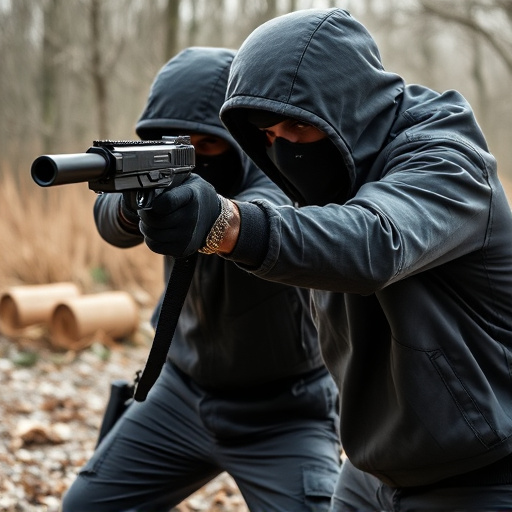
When considering bulk stun guns for retail stores, several key factors come into play to ensure effectiveness and customer safety. First and foremost, store owners should assess the power output of each stun gun, as this directly impacts its incapacitation duration. Higher joule ratings generally result in longer periods of muscle weakness or paralysis, which is crucial for self-defense scenarios.
Additionally, the type of stun technology matters. Electroshock weapons use electric current to disrupt muscles, while more advanced models employ specialized gases or mechanical force. Retailers should opt for reputable brands known for their consistent performance and safety standards. Durability and ease of usage are also essential considerations; a well-designed bulk stun gun should be reliable and require minimal training to operate effectively.
Safety Measures and Legal Implications
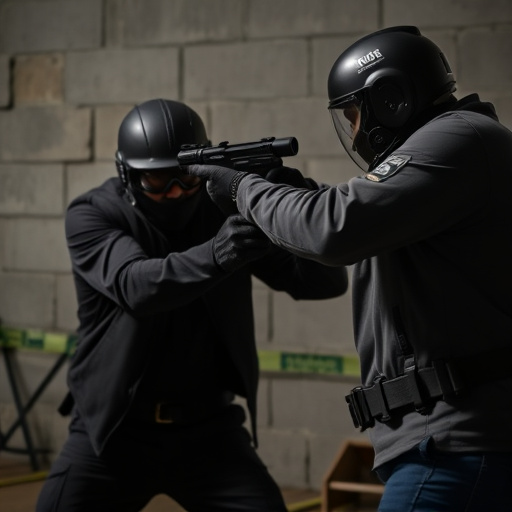
The use of stun guns, also known as Tasers, has sparked debates due to their impact on muscle incapacitation and potential safety risks. When used by law enforcement or individuals for self-defense, understanding the duration of muscle paralysis is crucial. Studies suggest that the effects can vary, typically lasting from several seconds to a few minutes, depending on factors like the model of the stun gun, the amount of current delivered, and the target area. However, it’s essential to remember that prolonged or repeated use may lead to adverse health consequences.
In many regions, the possession and use of stun guns are regulated by law, especially for civilian use. This regulation often includes restrictions on who can buy and carry them, as well as guidelines on their application. For example, bulk stun guns for retail stores must adhere to specific standards and may require special licenses or permits. Legal implications vary worldwide, so it’s crucial for users and retailers alike to stay informed about local laws to ensure safe and responsible practices.
In conclusion, understanding muscle incapacitation from stun guns is crucial for both self-defense enthusiasts and retailers considering bulk stun gun purchases. Stun guns effectively disrupt muscular function through electric current, but the duration of weakness varies based on factors like voltage, pulse width, and individual tolerance. Retailers should consider these variations when stocking bulk stun guns, ensuring customers are informed about potential effects and taking safety measures to mitigate risks associated with these powerful tools.
